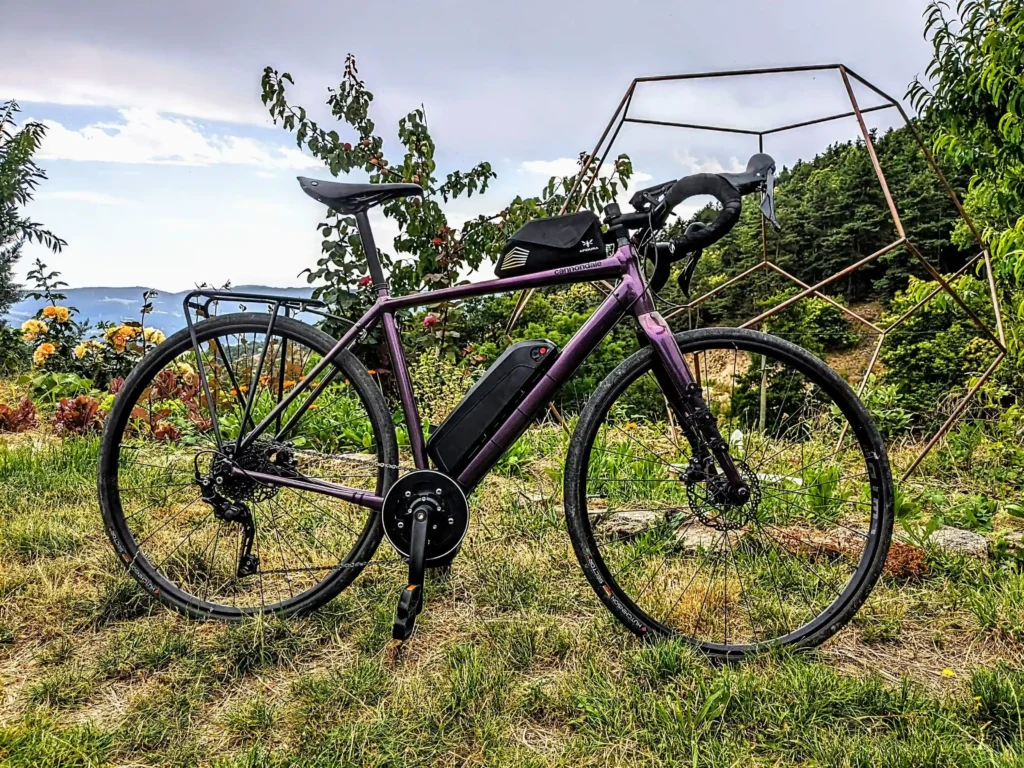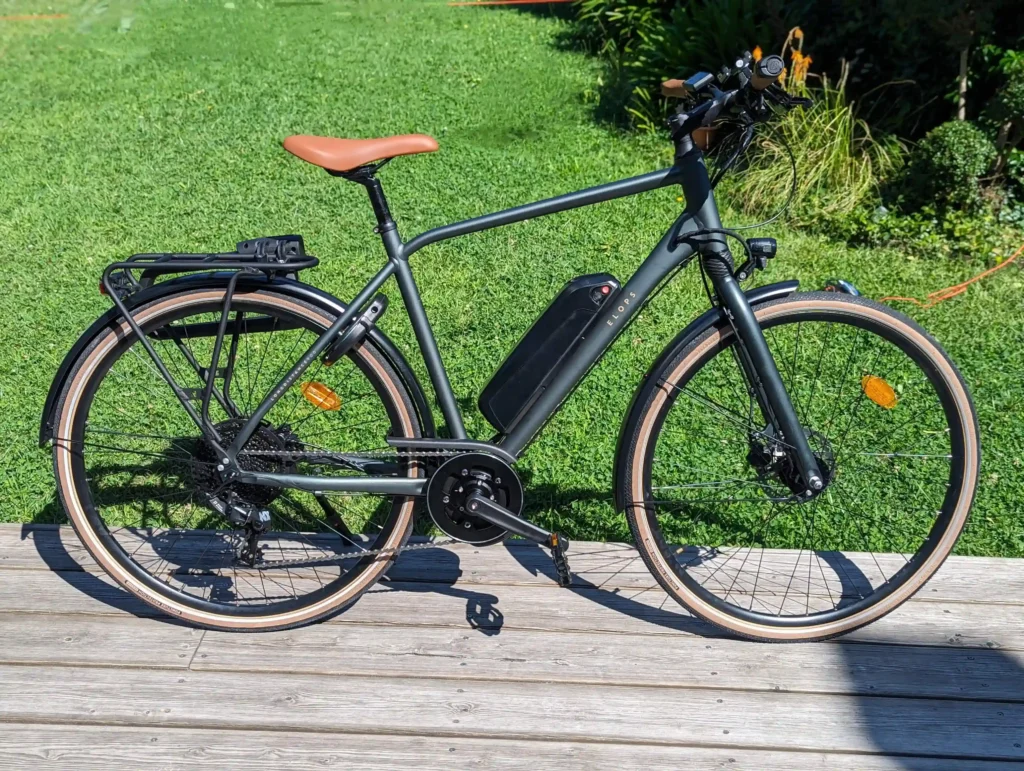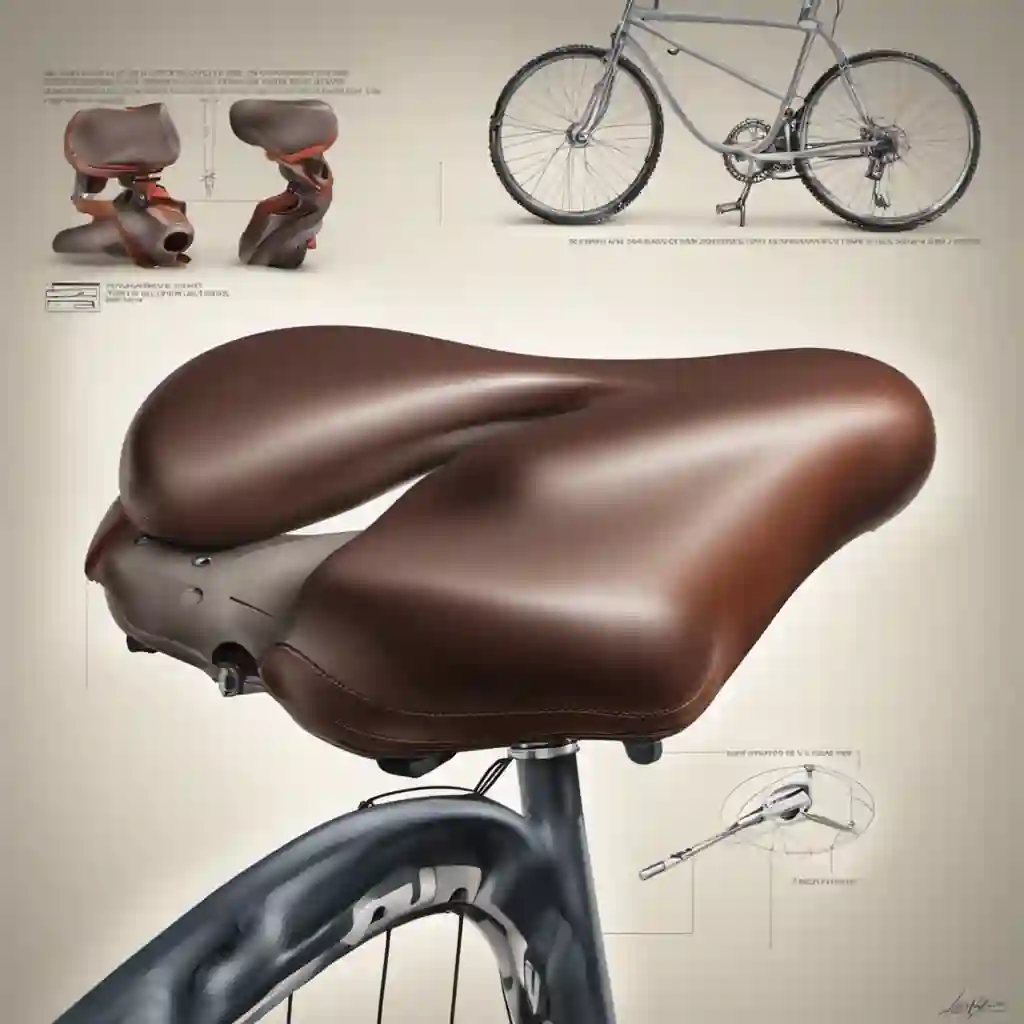More and more cyclists are opting for electric bikes (electrified or not 😉 ) to get around town or for rides in the countryside. However, it can be difficult to find the right model for your needs, given all the criteria to be analyzed (power, battery, screens, torque, motor type, brand, etc.). That’s where the torque sensor comes in, a technology that’s rapidly gaining ground in the world of electric bikes. In this article, we’ll look at the many advantages of this solution for electrically-assisted cycling.

What is a torque sensor and how does it work?
Before talking about the benefits of torque sensors on electric bikes, it’s important to understand what they are and how they work.
Torque sensor definition
The torque sensor is an electronic element that measures the force exerted on the pedals of an electric bicycle. More precisely, a pressure sensor measures the torque generated on the pedal axle and sends it to the electronic control system, which determines the level of electric assistance to be provided.
Torque transducer operating principle
The torque sensor measures the force applied to the pedals by the rider. The greater this force, the more the sensor will activate the electric assistance. To do this, it analyzes the pressure exerted on the pedal axle and transmits this information to the bike’s electric motor. So the harder you pedal, the more electric assistance you get, and vice versa.
The different types of torque transducers
There are two main types of torque transducer: the torsion torque transducer and the pressure torque transducer.
The torque sensor measures the force applied to the pedal as it rotates around the pedal axle. It is often mounted in the bottom bracket and uses strain gauges to calculate torsion. This is the type of torque sensor used by the TSDZ2b motor we use in our electrification kit at Syklo.
The pressure torque sensor directly measures the force applied to the pedal, using pressure sensors integrated into the pedal axle.
The advantages of torque transducers on electric bikes
The torque sensor is a key element in an electric bike, as it enables the electric assistance to be adapted to the force exerted by the rider. Thanks to this sensor, the level of electric assistance is proportional to the effort made by the cyclist. This means more efficient use of the battery and longer autonomy.
What’s more, the torque sensor makes for a more natural use of the electric bike. Electric assistance is progressive and adapts to the force exerted by the cyclist. This makes pedaling feel more natural and less artificial.
Last but not least, the torque sensor allows better management of the electric motor’s power. Thanks to this sensor, the electric motor does not provide excessive and unnecessary power when the cyclist does not need electric assistance. This makes them more economical to use and more respectful of the environment.
The importance of torque transducers when choosing an electric bike
The torque sensor is an important element to consider when choosing a bike or an electric bike kit. A quality torque transducer makes for more efficient and natural use of the electric bike. It is therefore recommended to choose an electric bike equipped with a quality torque sensor for an optimal riding experience.
What’s more, it’s important to choose the right torque transducer for the job. In fact, some torque transducers are more sensitive than others, and are better suited to city or mountain use. It is therefore advisable to find out about the different types of torque transducer available on the market before choosing an electric bike. Good news: with our Open Source Firmware, you can (if you wish) calibrate your torque transducer to your specific use and mophology.

Why use a torque sensor on an electric bike?
Improved electric assistance
The torque sensor makes it possible to provide more precise electric assistance according to the effort made by the rider. As a result, electric assistance is much more natural and tailored to the rider’s needs. It can be used to accelerate more quickly or to climb slopes more easily.
The torque sensor measures the force applied to the electric bike’s pedals and sends this information to the electric motor. It then adapts its assistance to the force exerted by the rider, making more efficient use of the energy supplied by the battery.
This also reduces rider fatigue during long electric bike rides, as the electric assistance provided is better adapted to the rider’s needs. The torque sensor eliminates the knock-on effect when the rider changes pedaling frequency, as on the Bafang BBS crankset motor.
Optimizing energy consumption
Thanks to the torque sensor, electric assistance is used more optimally, prolonging the life of the electric bike’s battery.
In fact, the torque sensor makes it possible to dose the electric assistance provided according to the effort made by the cyclist. This means that when the rider exerts a great deal of effort, the electric assistance is greater, but when the effort is less, the electric assistance is also reduced. This limits the battery’s energy consumption and extends its life.
This optimization of energy consumption also increases the electric bike’s range, which is particularly interesting for long outings or daily commutes.
Adapting to cyclist effort
The torque sensor allows you to take precise account of the effort expended by the rider. Electric assistance is adapted to your needs and enables you to remain physically active.
This adaptation of electric assistance also helps to better manage the effort made by the cyclist. In fact, when the rider wants to exert himself physically, he can reduce the electric assistance and make a greater effort. Conversely, when you want to rest a little, you can increase the electric assistance and make a lesser effort.
This means you can better manage your efforts and adapt to any situation, whether it’s a leisurely stroll in town or a sporty outing in the mountains.

The benefits of torque transducers for driving comfort
More natural electric assistance
Thanks to the torque sensor, electric assistance on the bike is much more natural, and depends on the rider’s performance. The system adapts in real time to pedal movements, giving a comfortable, fluid feel.
What’s more, the pedaling sensation is more pleasant with the torque sensor, as the electric assistance is more precisely metered. The rider doesn’t feel like he’s being propelled by the bike, but rather accompanied in his effort.
This more natural pedaling feel is particularly appreciated by cyclists who use their electric bikes to get around town, as it enables them to adapt better to different traffic situations. And for mountain bikers, it allows them to better manage the passage of obstacles.
Reduces fatigue on long journeys
The torque sensor allows the rider to exert less force when revving up, resulting in reduced muscle fatigue. This prolongs pedaling comfort and enables you to cover longer distances without feeling excessively tired.
In fact, the torque sensor makes it possible to precisely dose the electric assistance according to the effort made by the cyclist. As a result, the rider doesn’t need to exert excessive force to move forward, but can rely on the electric assistance to help him through the most difficult moments.
This reduction in fatigue is particularly appreciated by recreational electric cyclists, as it enables them to enjoy their outings to the full without being limited by their physical condition.
Easy to negotiate hills and obstacles
The torque sensor increases climbing cadence, making it easier to negotiate hills and obstacles. It’s a great advantage for cyclists who use their electric bikes for outings in the great outdoors.
In fact, the torque sensor makes it possible to provide greater electrical assistance when the cyclist encounters a climb or an obstacle in his path. In this way, the operator can maintain a steady pedaling cadence without having to exert excessive force to move forward.
This ease of crossing is particularly appreciated by electric mountain bikers, as it enables them to explore more difficult terrain without being limited by their physical condition.

The benefits of torque transducers for sports performance
Increased average speed
The torque sensor is a very useful device for professional and amateur cyclists looking to improve their sporting performance. In fact, it increases average speed while saving energy. Thanks to this device, it’s possible to optimize electric assistance and go faster without having to exert extra effort. In this way, cyclists can reach higher speeds while conserving their energy for the toughest parts of their route.
Improving cyclist endurance
The torque sensor also helps improve the rider’s endurance. In fact, it allows you to better manage your efforts during rides by optimizing electric assistance according to your needs. In this way, the cyclist can save energy for the more difficult phases of the journey and maintain a good cadence throughout. This also helps reduce muscle fatigue and prevent the risk of injury.
Possibility of training with different levels of assistance
The torque sensor also makes it possible to vary the level of electric assistance to suit different types of ride. This enables cyclists to train more effectively by increasing the difficulty of their route, for example by increasing resistance on uphill sections. In this way, they can improve their endurance and muscular strength while maintaining a good level of comfort.
What’s more, the torque sensor allows cyclists to personalize their training according to their goals. So they can choose the level of electric assistance that best suits their fitness level and goal. For example, cyclists looking to lose weight may opt for a low level of assistance, while those looking to improve their endurance may opt for a higher level of assistance.
Conclusion
The torque sensor is therefore a very interesting technology for cyclists who want a natural electric assistance adapted to their needs. Not only does it offer optimum driving comfort, it also optimizes sporting performance. What’s more, thanks to more optimal energy consumption, battery life is extended, making it a very environmentally-friendly solution. So why not opt for a bike or electric bike kit with a torque sensor for your next ride?





